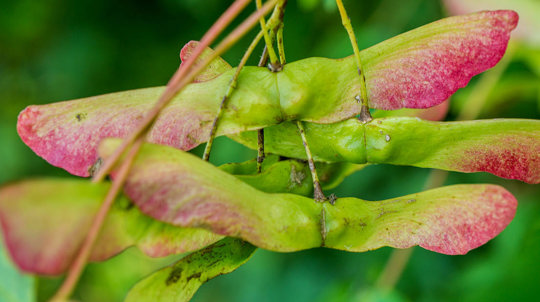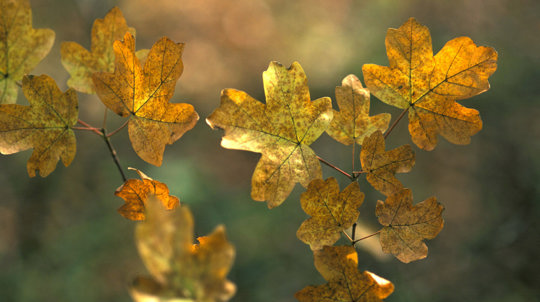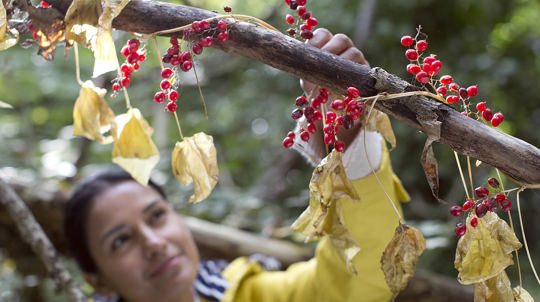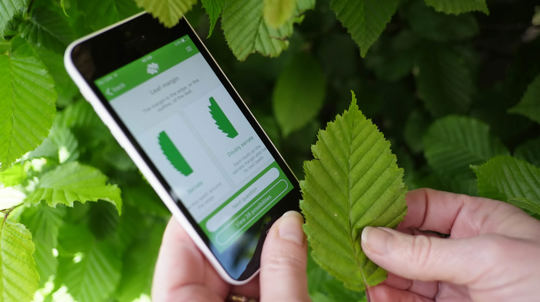Goat willow gets its name because the early spring foliage is a favourite food of tame goats.
Common tree identification: top 10 beginner's trees

Content manager, botanist and tree lover
Every year we receive enquiries from people wanting to know which tree species they’ve seen.
So, to give you a crash course in common tree identification, we've compiled our top 10 trees for beginners. It's based on the trees we get most enquiries about, together with our most popular species pages.
With tips on leaves, bark, flowers and fruit, you'll be telling one from the other like a pro.
1. Goat willow (Salix caprea)
A surprising chart-topper. According to our records, goat willow is the number one befuddling tree and the one we receive most ID enquiries about.
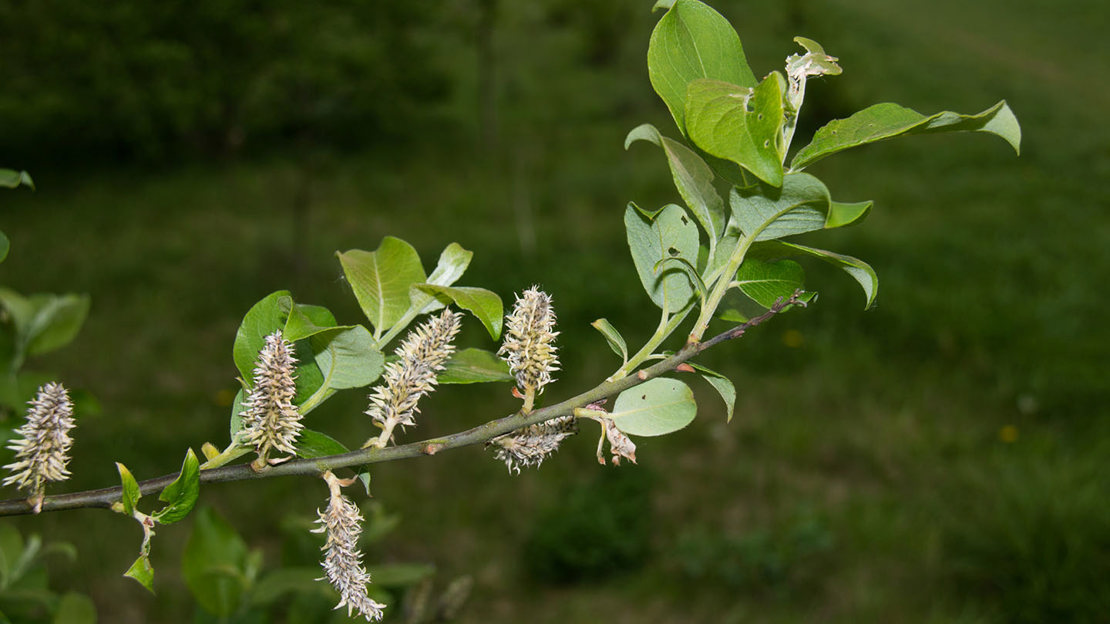
Appearance
Goat willow has oval leaves that have little points at the tips. The underside is often greyish and a bit woolly in texture. Its silky, silvery-grey catkins often appear before its leaves in early spring. The male catkins become bright yellow and then open to release pollen.
Size
Up to 10-12m but usually smaller.
Where it grows
A shrubby tree that's widespread throughout the UK, often in drier places than other willows, in woods, hedgerows and scrub.
Goat willow is an essential food plant for insect larvae, especially sallow kitten, sallow clearing and lunar hornet clearwing moths, and purple emperor butterfly.
2. Ash (Fraxinus excelsior)
Look out for this tall, graceful tree with greyish trunk and upward-pointing branches.
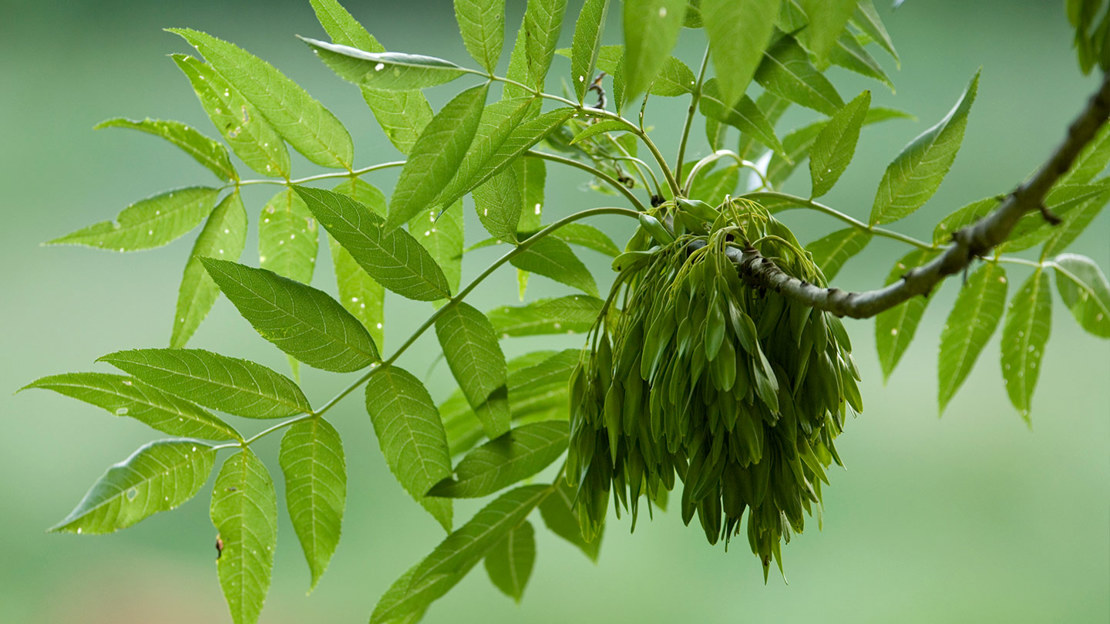
Ash's branches curve down, then up again a bit like a candelabra.
Appearance
Ash is easily identified in winter by its grey branches and purple-black leaf buds and is one of the latest native trees to come into leaf in late spring. Its leaves are pinnate (or feather-shaped) having a central stem with smaller leaflets arranged on either side of it. Look for clusters of purplish flowers near the tips of twigs in spring. Female flowers develop into clusters of one-winged fruits knows as 'keys' that turn from green to brown and often continue to hang onto the tree through autumn and winter.
Size
35-40m tall.
Where it grows
Widespread, preferring calcareous soils. You'll find ash in woodland, scrub and hedgerows, and on rock scars and cliffs. In some areas, it's grown as a timber tree or coppice and is a rapid coloniser of waste ground, disused quarries and railway banks.
3. Whitebeam (Sorbus aria)
The pale, furry undersides of its new leaves can make the whole tree appear white from a distance.
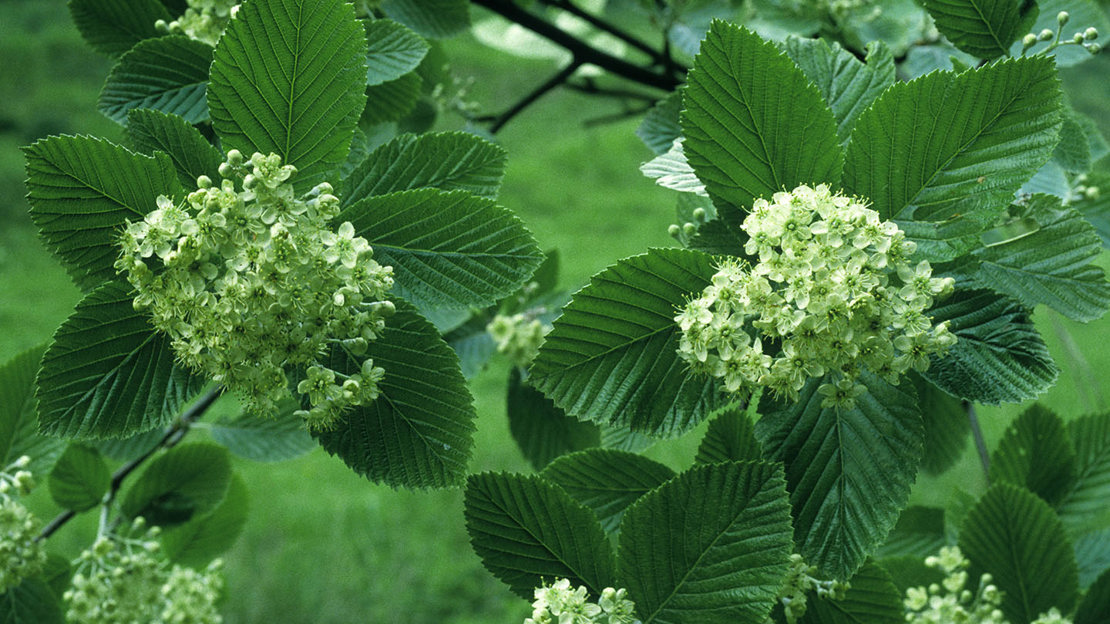
Whitebeam can tolerate smoke and pollution - varieties are often planted in towns along roads and streets.
Appearance
Whitebeam is a compact tree. Its oval leaves have small teeth all around the edges and their undersides are covered in white, felt-like hair. White flowers open in May in showy clusters, developing into rounded berry-like fruits that ripen to bright red by September.
Size
15-20m tall.
Where it grows
Its native range is southern Britain, where it grows in hedgerows and woodlands edge. But this tree is often planted in towns and cities, on roadside verges, streets and in gardens, so you'll see it well beyond its natural range.
4. Plum (Prunus domestica)
Not a native tree, but commonly grown in the UK. It's thought that plum first originated from a hybrid between blackthorn and cherry plum.
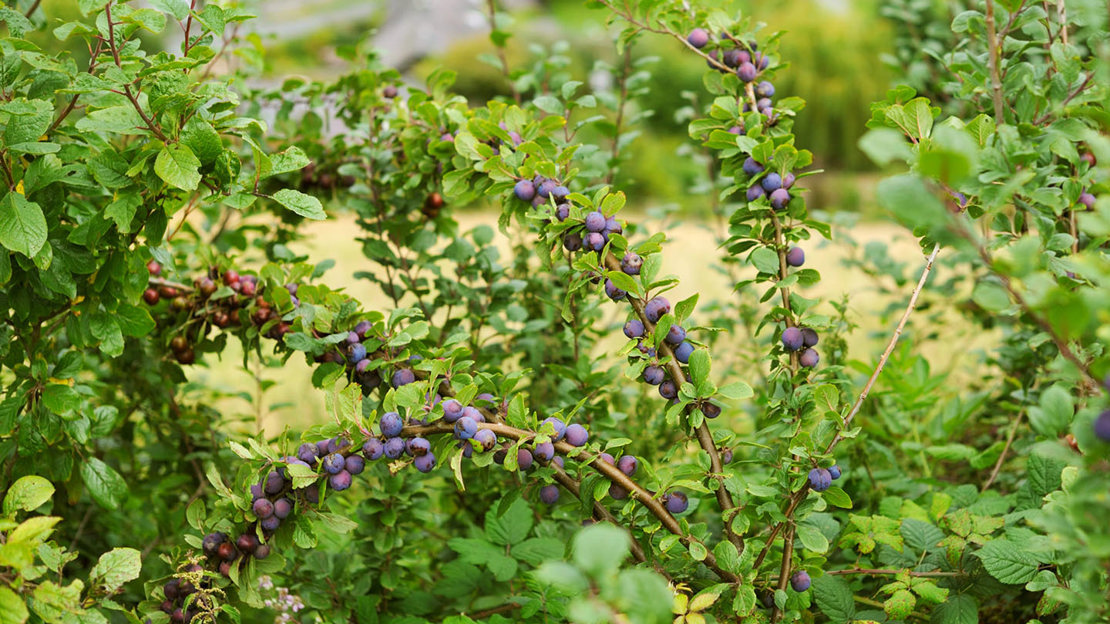
There are many plum cultivars, each bred for the flavour, texture and colour of the fruit.
Appearance
Plum is a smallish tree with dull brown, sometimes tinged purplish, bark. Its leaves can vary in size and shape but are usually oval or teardrop-shaped with small teeth around the edges. Its white blossom appears in clusters in spring, followed by smooth-skinned, oval fruits. Fruits vary in colour and size and in some cultivars can be up to 7.5cm long, ranging from yellow or green to red or purple.
Size
To 10m tall, though often pruned into smaller trees.
Where it grows
Widely grown in gardens throughout the UK. Sometimes you'll find it growing in the wild, usually close to civilisation.
5. Field elm (Ulmus minor)
Field elm is thought to be an ancient introduction to the UK, though whether it's native or not has caused disagreement and confusion.
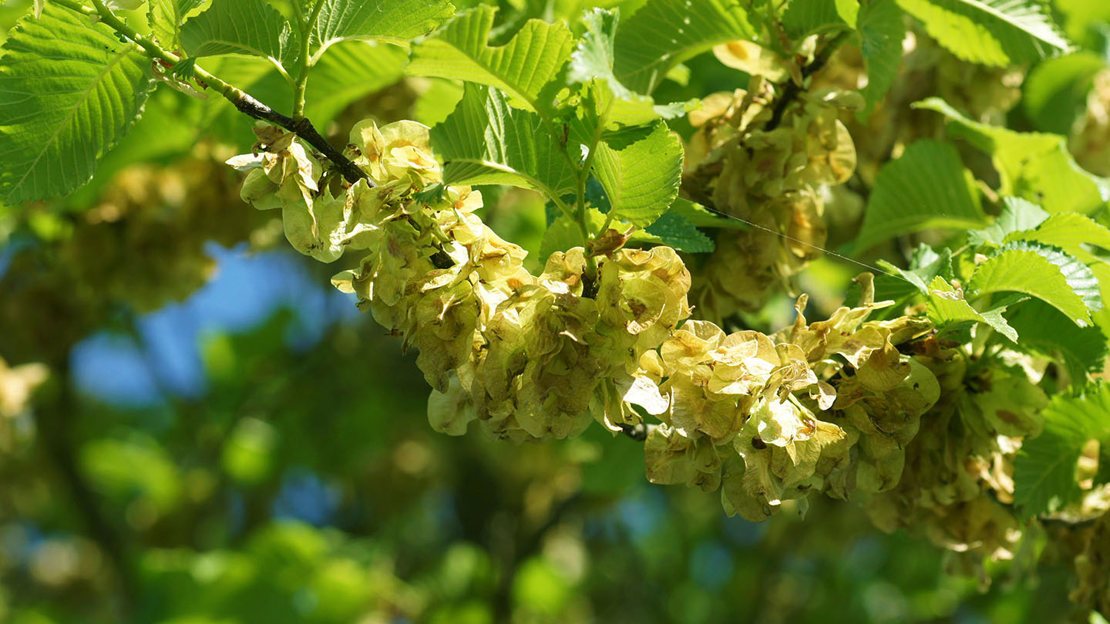
You can quickly tell if a tree is an elm by looking at the leaves - the leaf bases are always uneven.
Appearance
Field elm had grey-brown bark, often with crossing ridges and the twigs sometimes have corky wings or ridges. Leaves are oval with serrated edges and a point at the tip. As with all elms, the base of the leaf is asymmetrical. Its tiny, clustered green and red flowers appear in late winter and later develop into small, papery disc-like fruit known as samaras.
Size
Up to 30m tall but you'll mostly find it growing as a smaller shrub in hedgerows.
Where it grows
Field elm was once common in the South and South East of England but now almost all mature trees have been wiped out by Dutch elm disease. These days you'll find it growing as a shrub in hedgerows and along wood margins and field borders. There are distinctive local variants.
6. Field maple (Acer campestre)
This native tree is a close relative to the non-native but widespread sycamore.
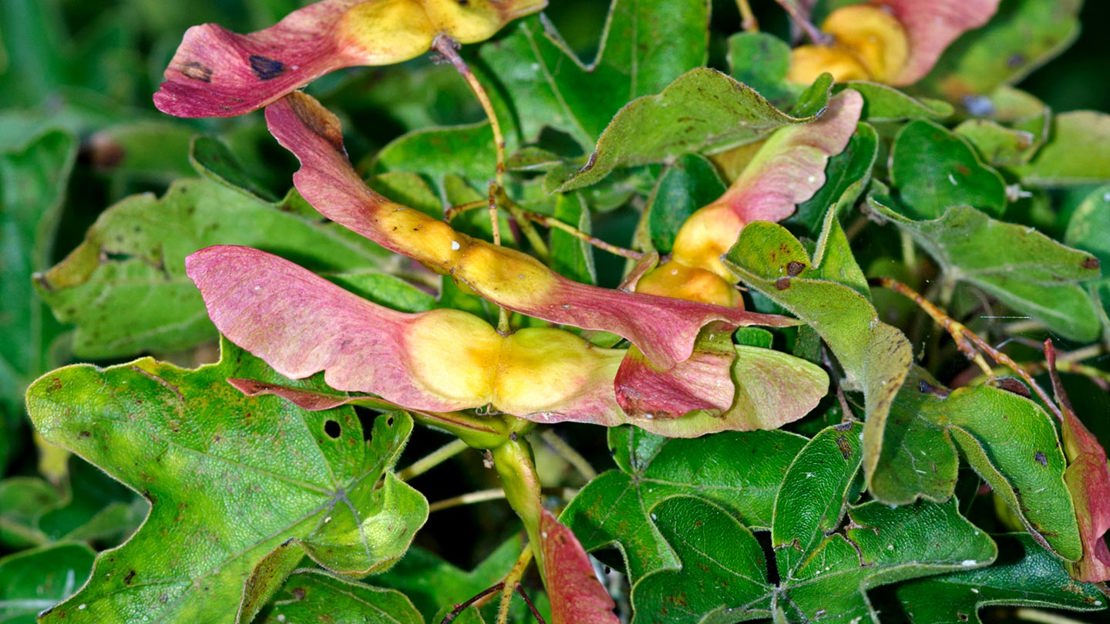
Tell field maple apart from sycamore by their winged fruits. In sycamore, the wing pairs are more v-shaped whereas in field maple the wings are in a straight line.
Appearance
The leaves of field maple are similar to other maples but with very rounded lobes. They turn a beautiful golden colour in the autumn. Tiny flowers appear in clusters in May and develop into 2-winged, pink-tinged fruits that are similar to the 'helicopter' seeds of sycamore.
Size
Up to 20m or so but it often grows as part of a hedgerow where its growth is stunted by lopping.
Where it grows
A common and widespread tree throughout most of Britain, less so in the far north and Scotland. Look for it in woodland, scrub and old hedgerows. It is also widespread as a planted tree in urban areas, on farmland, along roads and in hedgerows and coppice.
7. Rowan (Sorbus aucuparia)
Rowan is also known as mountain ash because it can grow in the uplands and has a feather-shaped leaf similar to an ash tree.
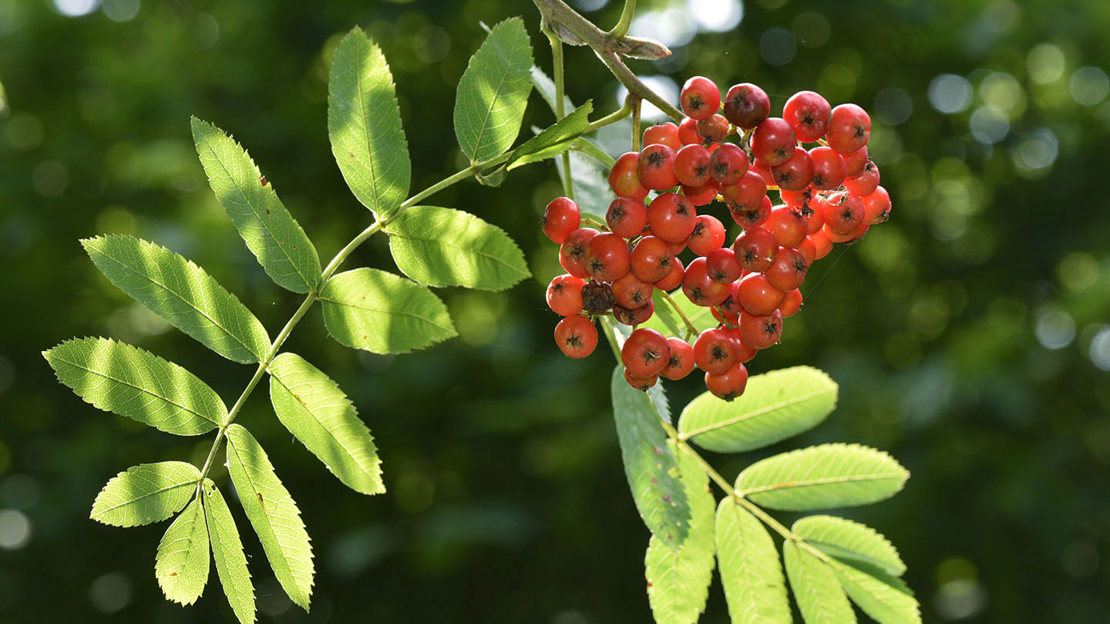
Rowan, ash and elder trees are the only three native tree species in the UK with feather-shaped (pinnate) leaves.
Appearance
The leaves of rowan are feather-shaped with a central vein and smaller leaflets arranged on either side. In May frothy clusters of white flowers appear, followed by clusters of berries that turn scarlet red by September. There are cultivated varieties of rowan with berries that are orange, pink or white. Seeds are dispersed by fruit-loving birds.
Size
To 15m.
Where it grows
Native to much of the UK, it's a medium-sized tree of woods, cliffs, rock outcrops and rocky riversides. It's widely planted as a garden, park and street tree. It avoids calcareous and heavy soils and dense shade.
8. English oak (Quercus robur)
Also known as pedunculate oak, this is the more common of the two native UK oaks. The other is sessile oak (Quercus petraea)
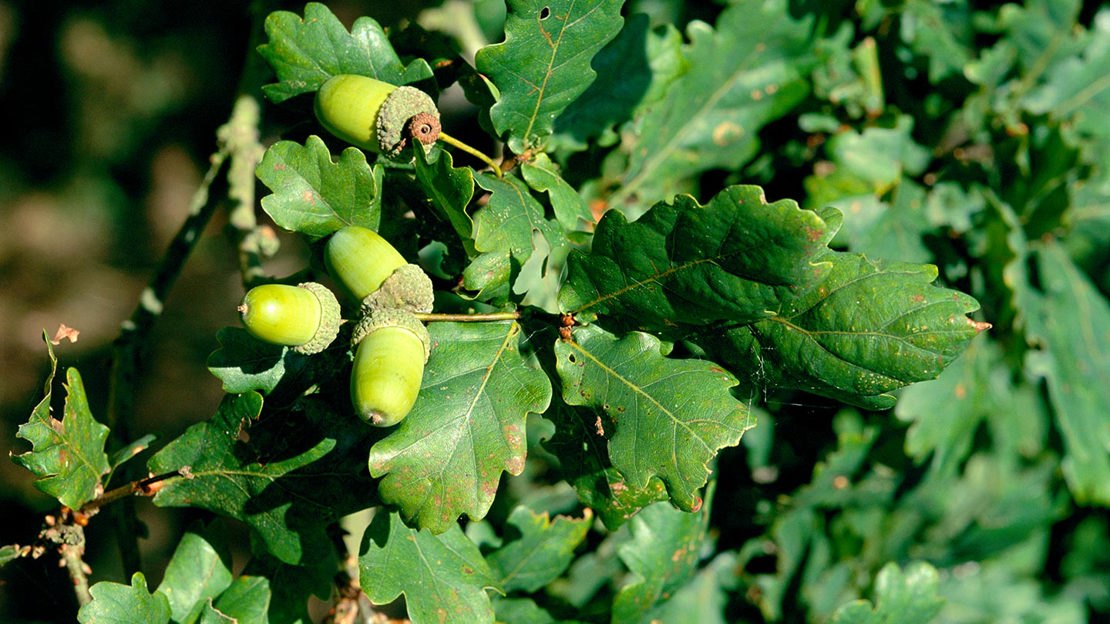
Tell the two native oaks apart by their acorns. English oak has acorns on long stalks (peduncles) but sessile oak acorns don't have stalks.
Appearance
As with all oaks, English oak leaf buds are grouped towards the tip of each twig making them easy to distinguish in winter. Leaves are characteristically oak-shaped with very short stalks and deep lobes and smooth edges. The flowers are small, dangling catkins that develop into the familiar acorn cup and seed. English oak acorns have long stalks.
Size
To 40m.
Where it grows
A long-lived and widespread tree of woods, coppice and ancient wood pasture. It grows on a wide range of soils, typically those which are heavy and fertile.
9. Alder (Alnus glutinosa)
A species of damp habitats especially the banks of rivers, streams and lakes. or in places where water stands.
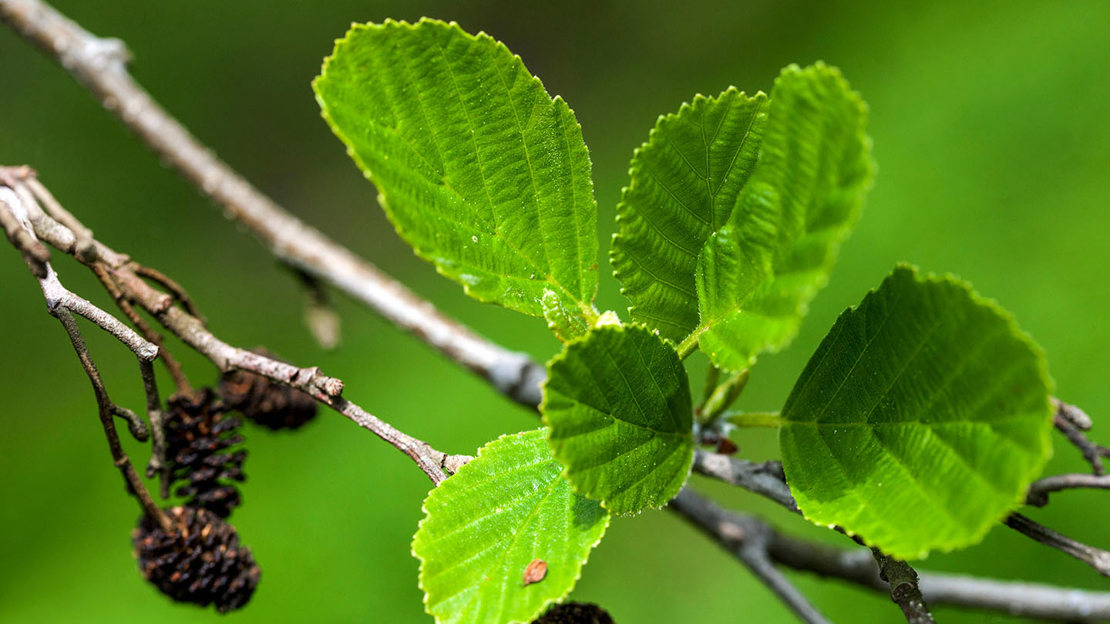
The most distinctive feature of alder trees is their brown, woody female 'cones' that often stay on the tree all year.
Appearance
Leaves of alder are distinctive rounded or racquet-shaped with toothed edges and a blunt or notched tip. Male 'lamb's tail' shaped catkins emerge and release their yellow pollen in March. Female catkins start off tiny and green but later develop and expand into woody 'cones' that, at a glance, resemble conifer cones.
Size
To 28m.
Where it grows
Widespread in wet habitats across much of the UK except the very far north.
10. Hazel (Corylus avellana)
The ultimate coppice tree, you'll tend to see this tree as a woody bush with several stems rather than a single-trunked tree.
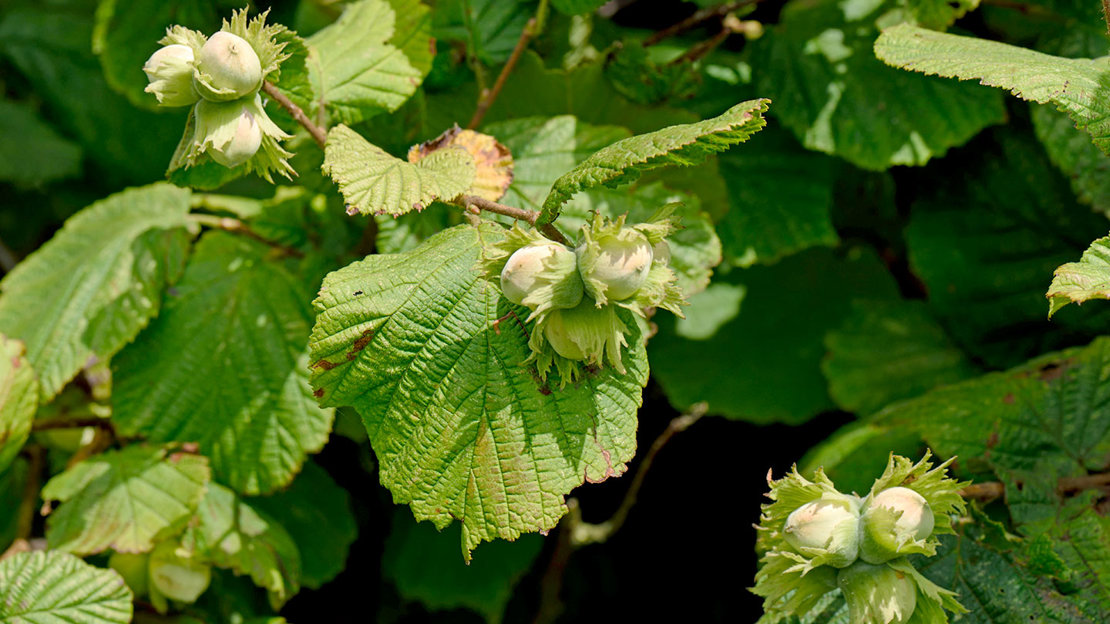
The leaves of hazel are bristly and rough to the touch due to their tiny hairs.
Appearance
In winter, hazel can be identified by its slightly hairy twigs, green, rounded leaf buds, and smooth bark. The leaves open in April and are a rounded oblong shape with a toothed edge and a slightly pointed tip. Male catkins emerge in February and become drooping 'lamb's tails' with bright golden pollen. The tiny female flowers are difficult to spot, but when you get your eye in they look like miniature cerise-pink sea anemones. They later develop into brown nuts that sit within a leafy husk.
Size
To 12 m.
Where it grows
Widespread tree of hedgerows and woodlands. You'll often find it in the understorey of many woods, in scrub, hedgerows, on river banks, limestone pavement, cliffs and hedgerows. It's frequently coppiced to make poles, stakes and hurdles.
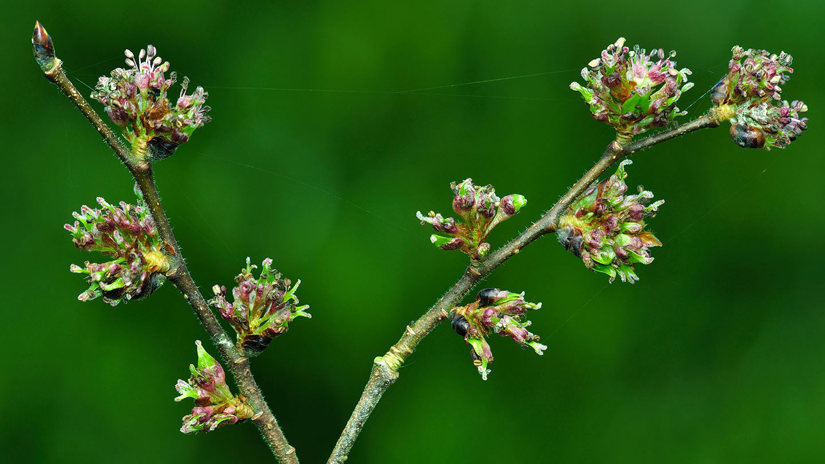
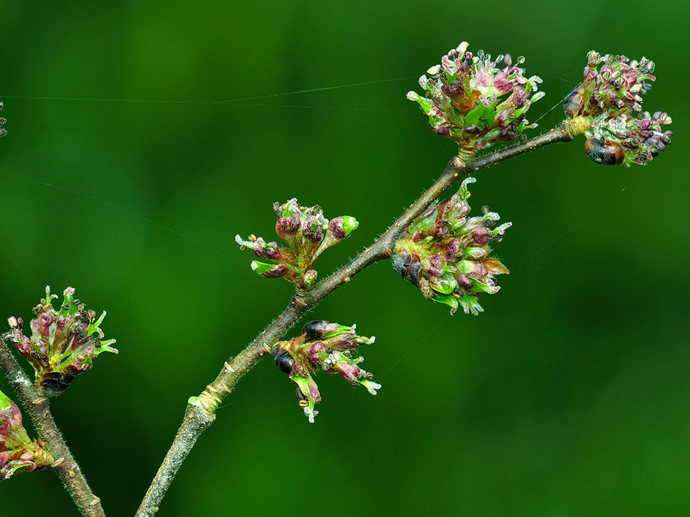
A-Z of British trees
Explore our simple A-Z identification guide to the trees of Britain, from natives to naturalised and widely planted non-native species. You'll find images, tree descriptions and information on where you're likely to find them.


